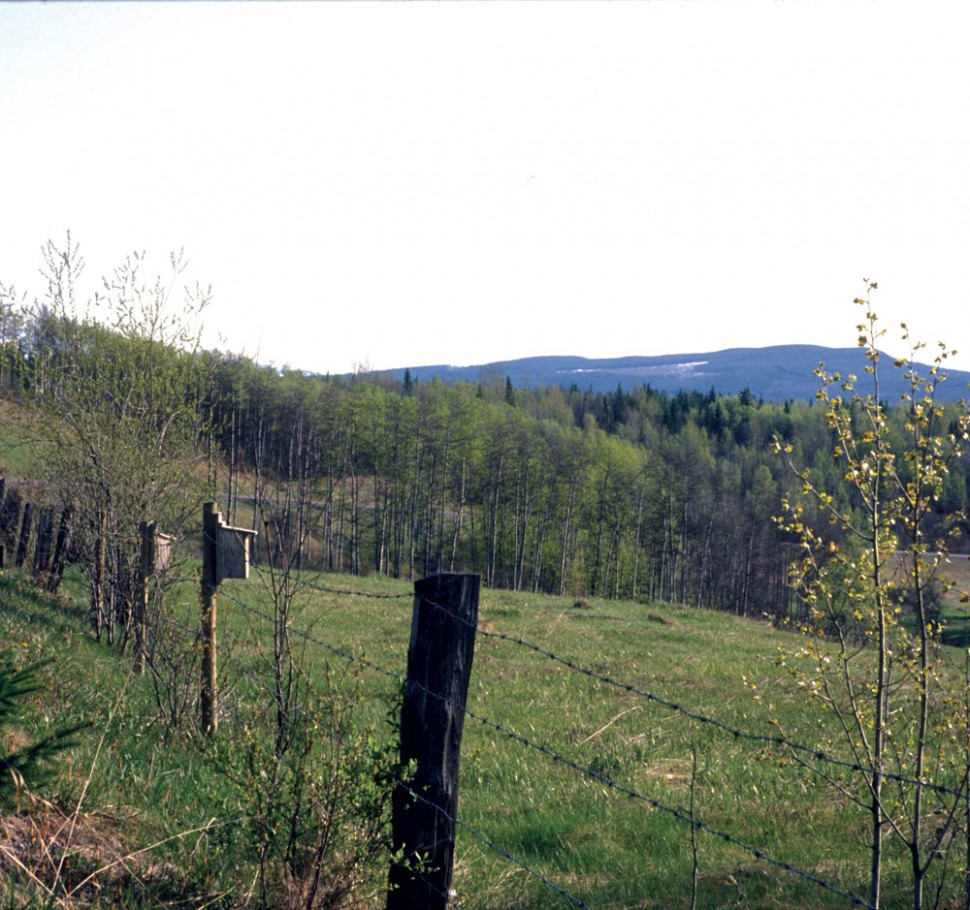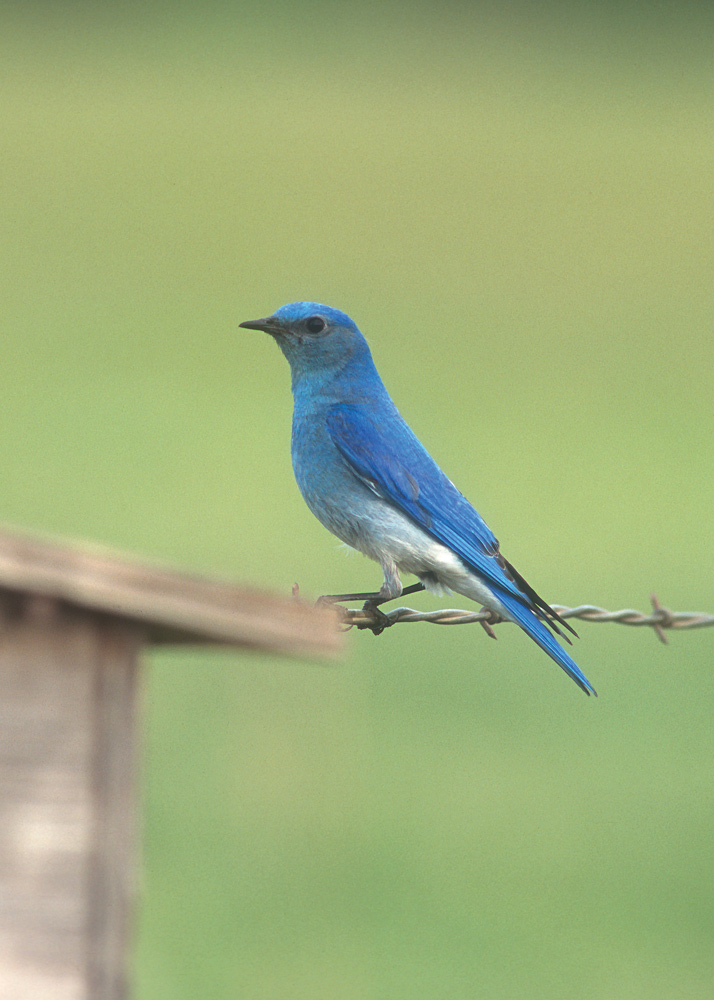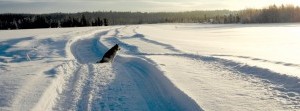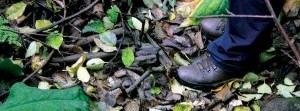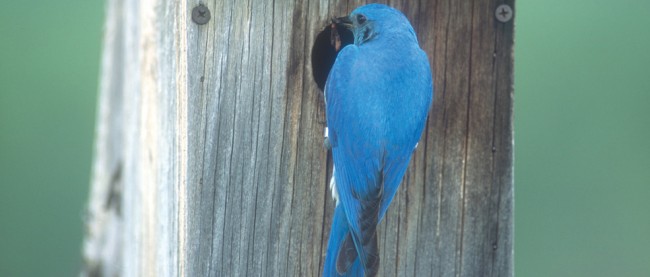
Photo Credit: John Franken
Building a home for bluebirds to roam
My fascination with bluebirds began in spring 1977. Building our first home, a log house, on a small acreage just west of Houston, BC had been a dream. We had just finished the final round of logs when, much to my dismay, I discovered that our round of logs were not level: one end was 12 inches lower than the other.
It was at that moment that a flock of bright blue migrating mountain bluebirds landed on the logs. This became a spiritual experience, soothing my frustration and sparking my passion for bluebirds.
I started researching and discovered that, across North America, people and groups were making places for these birds to build their nests. Traditionally, bluebirds nested in tree cavities chiselled out by woodpeckers. However, continued land-clearing and the use of treated fenceposts had reduced the number of nesting sites, affecting the population of bluebirds across the continent.
Mountain bluebirds (Sialia currucoides) are one of three species found in North America: the two others are the western bluebird (Sialia Mexicana) and eastern bluebird (Sialia sialis). Only mountain and western bluebirds are found in BC, although the western is not found in north-central BC. The mountain bluebird is an annual migrant, returning to the North as early as the beginning of March, when snow still covers the ground, and leaving again as late as September. It has been recorded to breed from Hazelton east to the Alberta border.
Bluebirds in the Bulkley Valley
The next spring, I built four nest boxes according to specifications and placed them on the aspen trees around our house and on trees overlooking the open field below. The tree swallows liked them and built nests, but no bluebirds. In 1979, we moved to Winfield and the following spring we heard from the new owners of our log house that bluebirds had nested in one of the boxes. That was exciting news—to know that we had provided a home for a pair of mountain bluebirds.
Through talking to locals and taking a trip to the Royal Museum in Victoria, I found out that bluebirds seemed to have been previously more common in the Bulkley Valley and that the closest bluebird trail—nest boxes spread along a road or pathway—was near Williams Lake on Beecher’s Prairie. The purpose of that trail was to use natural means to control grasshopper populations on open rangeland.
Even though the Bulkley Valley was far north of Williams Lake, I thought that there was potential to encourage more bluebirds to nest in the valley by providing artificial nest sites, with lots of open fields and some dry ridges along Telkwa High Road and Snake Road. In 1988, after moving back to the area, we started getting landowner permission to mount bluebird boxes on the rural roads around Smithers. Local businesses donated materials
and supplies to get the project off the ground.
Today, we are monitoring roughly 100 boxes each year on rural roads that are mostly northeast of Smithers. The project has proved to be successful; though the results vary from year to year, 2013 showed a slight increase in the number of fledged mountain bluebirds. Out of 125 eggs that were laid, 99 young fledged, resulting in a 79 percent success rate. This bluebird trail is the most northerly nest-box project being reported to the Southern Interior Bluebird Trail Society.
Build it and they will nest
To have the pleasure of mountain bluebirds in your yard, the correct habitat must be available. Bluebirds prefer areas with open fields and some isolated trees and shrubs. Their preferred method of getting food is to spot insects in the short grass or on a gravel road. They can often be observed hovering in an open field.
Nest boxes can be placed on fenceposts or isolated aspen trees in mid-March, when we can expect to see the first bluebirds returning. Avoid choosing groups of trees with spruce and aspen for a
nest-box site, as this can attract squirrels. Research has shown that bluebirds have a preference for roomy nest boxes with good air circulation.
The size of the nest box entrance is also important. Both round holes and rectangular slats can be used. Round 1 9/16-inch holes have worked well in the Bulkley Valley and are specific to the mountain bluebirds. This size prevents the entrance of starlings and allows the 18-day-old plump fledglings to leave the nest.
In the Bulkley Valley, we have tried putting boxes in pairs four to five metres apart. This usually prevents undue competition between tree swallows and bluebirds. Bluebirds can also be very creative in choosing nest sites: old cars and even rolled-up carpets in carports. Bluebirds, like all small birds, are very susceptible to cat predation. This needs to be taken into consideration if you want bluebirds in your yard.
Mountain bluebirds in your yard
By mid-May, bluebirds start becoming serious about choosing their new home. Once they have decided, the female will begin building a beautiful, round nest from fine grasses. Egg laying will begin soon after the nest is complete. Most nests have an average of four to six light-blue eggs.
The duller-coloured female incubates the eggs for 13 to 15 days before the featherless young hatch late May or early June. After the eggs hatch, both parents are busy going in and out of the hole carrying insects like beetles and grasshoppers in their beaks.
If the weather is favourable, and enough insects are available, the young will begin to leave the nest 18 days later. Bluebirds that have nested early will sometimes build a second nest and their young will leave around the middle of July. Older siblings may help the parents feed the younger, second-nesting chicks. A bluebird will often return to the same site for four or five years, or the span of their lifetime.
These jewels of spring are a great living legacy in the North. Bluebirds can provide residents many years of natural insect control and visual pleasure. Nest boxes are a positive way to practise ecological responsibility, to enhance the biome and ensure our living legacy continues to prosper.
Thirty-seven years after building our first home and our first nest boxes, the thrill of the returning bluebirds adds to the excitement each spring as new life returns with its full splendour to the Bulkley Valley.
Bulkley Valley mountain bluebird nest competitors
Tree swallow: A major population decline has made tree swallows less likely to compete with bluebirds.
House sparrows: Nest boxes near farms with lots of spilled grain for food will encourage these nest destroyers and competitors.
Chickadees: Chickadees will occasionally build their finely woven nest in a nest box.
Wasps: Wasps will sometimes build nests and even fill the entire nest box cavity.
Squirrels: Squirrels like to use boxes for storage and raising their young, and they prey on bluebirds’ eggs and their young.
Mice: Mice will raise their young in nest boxes.
Bears: Bears will tear boxes off trees and fence post to feed on the young birds.
Weather: Cold, wet weather in May and June will cause adult birds to abandon eggs and young.



